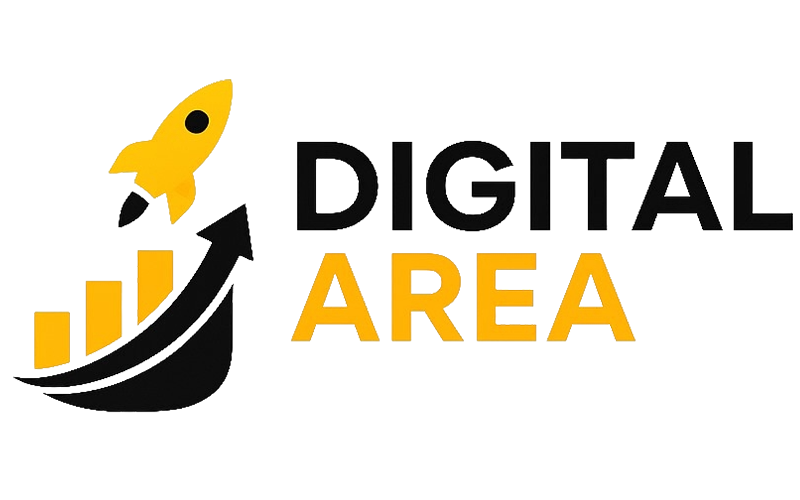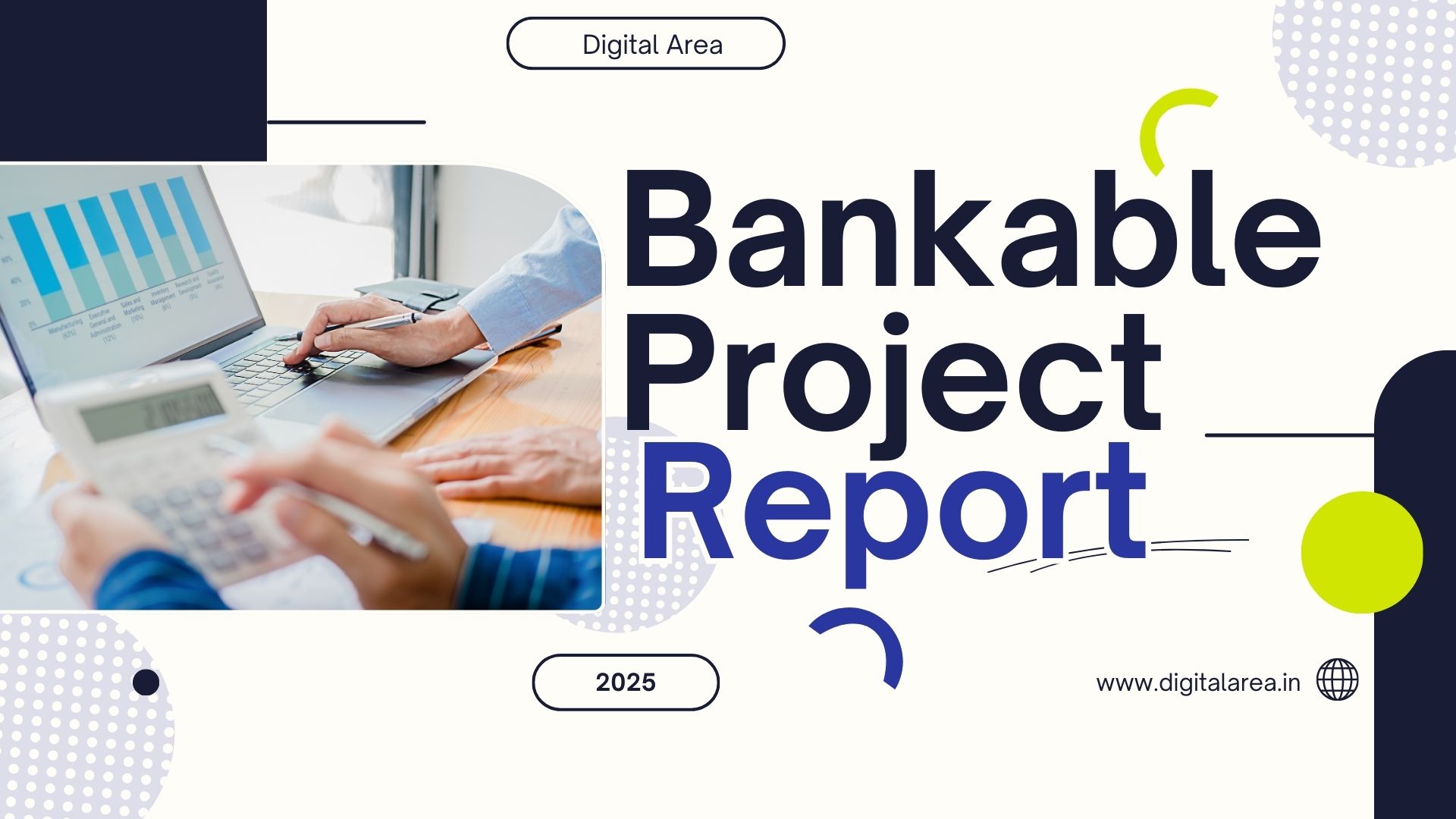Unlock the Funding You Need with a Perfectly Crafted Document
Every visionary entrepreneur and established business owner faces a common hurdle: securing capital. Whether you’re launching a startup, expanding operations, or launching new bankable infrastructure projects, turning your idea into reality requires funding. This is where most ventures stumble. Banks and investors reject countless applications not because the ideas are bad, but because they are presented poorly.
The key to unlocking vaults of funding lies in a single, powerful document: the Bankable Project Report (BPR). At Digital Area, we specialize in transforming your business vision into a compelling financial narrative that lenders cannot ignore.
This guide will demystify the process, providing you with a step-by-step blueprint to understand, create, and leverage a BPR for success.
What is a Bankable Project Report?
A Bankable Project Report (BPR) is a detailed, structured document that presents a comprehensive picture of a proposed business project’s viability, profitability, and financial sustainability. In simple terms, it’s the business equivalent of a meticulously crafted blueprint for a building.
But what does bankable project mean? The term “bankable” is the crucial element. It signifies that the project has been rigorously analyzed and deemed financially sound, with a high degree of confidence that it will generate sufficient returns to repay loans and provide a profit. It’s proof that your project is not just a idea, but a worthwhile investment.
Unlike a simple business plan, a bankable DPR (Detailed Project Report) delves deeper into financial modeling, risk assessment, and market analysis, specifically tailored to meet the stringent criteria of financial institutions.
Why a Bankable Project Report is Crucial for Business Success
You may have the most innovative product or service, but without capital, it remains dormant. A strong BPR is your gateway to that capital. Its importance cannot be overstated:
- Convincing Banks and Investors: It is the primary tool to persuade lenders and stakeholders of your project’s feasibility.
- Transparent Financial Planning: It forces you to scrutinize every cost, revenue stream, and potential risk, creating a realistic roadmap for your business.
- Faster Loan Approvals: A well-prepared BPR accelerates the due diligence process, significantly reducing delays in loan sanctioning.
- Building Investor Trust: It demonstrates your professionalism, thoroughness, and commitment, building credibility and trust from the outset.
Key Components of a Bankable Project Report
A professional bankable project report sample follows a strict structure. Missing any of these components can raise red flags for evaluators.
- Executive Summary: A concise overview of the entire project, highlighting key objectives, financial requirements, and projected returns.
- Business/Promoter Profile: Background information about the company and the key individuals driving the project.
- Project Description: A detailed explanation of the product or service, the problem it solves, and its unique selling propositions.
- Market Analysis: A thorough study of the target market, including demand potential, competition, industry trends, and growth projections.
- Technical and Operational Plan: Details on the manufacturing process, technology used, manpower requirements, and logistics.
- Financial Projections: The heart of the report. It includes:
- Cost of Project
- Means of Financing (Equity/Debt)
- Revenue Model
- Projected Profit & Loss Statements
- Cash Flow Statements
- Balance Sheet Forecasts
- Break-Even Analysis
- Key Ratios (ROI, Debt Service Coverage Ratio)
- Risk Assessment and Mitigation: Identifying potential challenges (market, operational, financial) and outlining concrete strategies to manage them.
- Implementation Timeline: A clear, phase-wise schedule for executing the project.
- Repayment Schedule: A detailed plan outlining how and when the loan will be repaid.
Step-by-Step Guide to Preparing a Bankable Project Report
Wondering how to prepare a bankable project report? Follow this systematic approach:
- Conduct In-Depth Research: Analyze your industry, competitors, and target audience. Gather reliable data to support your claims.
- Define Clear Objectives: Precisely outline what the project aims to achieve in measurable terms.
- Estimate Costs Accurately: Meticulously calculate all capital and operational expenditures. Avoid underestimation.
- Project Revenue Streams Realistically: Base your forecasts on solid data and realistic assumptions, not optimism.
- Perform a Feasibility Analysis: Critically evaluate if the project is technically, financially, and operationally viable.
- Create Robust Financial Models: Build detailed spreadsheets for P&L, cash flow, and balance sheet projections for at least 3-5 years.
- Draft the Report: Compile all the information into the structured format described above.
- Review and Refine: Scrutinize the report for errors, inconsistencies, and gaps. It often helps to have an external expert review it.
How Banks and Investors Evaluate a Bankable Project Report
Lenders don’t just read your report; they dissect it. They look for:
- Clarity and Credibility: Is the data verifiable? Are the assumptions logical?
- Management Capability: Does the promoter have the experience to execute the plan?
- Financial Viability: Are the ROI and cash flow projections strong enough to service debt?
- Risk Management: Have you identified the major risks, and are the mitigation plans adequate?
- Loan Repayment Capacity: Does the projected cash flow comfortably cover the repayment schedule?
Institutions like NABARD and the World Bank have specific frameworks (e.g., NABARD bankable project report guidelines, World Bank project report standards) that they adhere to. Aligning your report with these frameworks is crucial for success.
Benefits of Having a Strong Bankable Project Report
The effort invested in creating a powerful BPR yields significant returns:
- Significantly higher chances of loan approval.
- Ability to negotiate better terms and interest rates.
- A clear operational roadmap to guide your business growth.
- Enhanced credibility with vendors, partners, and customers.
- A tool for attracting equity investors, not just debt.
Common Mistakes to Avoid in a Bankable Project Report
- Overly Optimistic Projections: Unrealistic revenue forecasts are the fastest way to get rejected.
- Ignoring Risks: Pretending that nothing can go wrong shows naivety.
- Incomplete Information: Missing sections or data creates doubt.
- Poor Presentation: Sloppy formatting, grammatical errors, and unclear writing reflect poorly on your professionalism.
- Using a Generic Template: Not tailoring the report to your specific industry or the lender’s requirements.
Bankable Project Report vs. Regular Project Report
It’s vital to understand the difference:
| Feature | Regular Project Report | Bankable Project Report (BPR) |
|---|---|---|
| Purpose | Internal planning and guidance | Securing external funding |
| Depth of Financials | Basic cost and revenue estimates | Detailed, multi-year financial projections and ratios |
| Audience | Internal management team | Banks, financial institutions, investors |
| Risk Analysis | Often minimal or omitted | Comprehensive analysis with mitigation strategies |
| Scrutiny Level | Low | Extremely high |
How Digital Area Helps in Creating a Bankable Project Report
At Digital Area, we understand that your expertise lies in running your business, not in crafting complex financial documents. Our expertise bridges that gap. We are more than just a digital marketing agency in Meerut; we are your strategic partners in growth.
Our team of analysts and consultants works closely with you to:
- Develop a customized
model bankable project reporttailored to your specific industry and project. - Conduct thorough market research to build a solid, data-driven case for your venture.
- Prepare robust financial models with realistic assumptions that withstand banker scrutiny.
- Ensure your report complies with specific requirements of NABARD, World Bank, or other institutions.
- Provide a comprehensive
checklist for bankable project reportto ensure nothing is missed.
We take your vision and translate it into the language of finance, giving you the best possible chance to secure the funding you deserve.
FAQs Related to Digital Area and Bankable Project Reports
Q1: What industries do you specialize in for creating Bankable Project Reports?
A: Digital Area has experience across a wide range of sectors, including agriculture (for NABARD bankable project reports), manufacturing, retail, service industries, technology startups, and bankable infrastructure projects. Our methodology is adaptable to any business model.
Q2: How does Digital Area’s marketing expertise help in preparing a BPR?
A: Our core expertise in digital marketing provides a significant advantage. We conduct deep digital market research to analyze online demand, competitor presence, and customer sentiment, providing highly accurate data for the ‘Market Analysis’ section of your report, which is often a weak point for others.
Q3: Can you provide a bankable project report sample or a checklist for bankable project report?
A: Absolutely. We understand the importance of starting on the right foot. Contact us through our website at Digital Area to request a sample outline and a comprehensive checklist tailored to your business needs.
Q4: Do you also help with presenting the report to banks?
A: Yes. Our service includes preparing an executive summary and briefing you on potential questions, ensuring you are fully prepared to confidently present your project to the lending committee.
Q5: I already have a business plan. Can you upgrade it into a bankable DPR?
A: Certainly. We can audit your existing business plan, identify gaps, and enhance it with the necessary financial depth, risk analysis, and formal structure required to meet bank standards, effectively turning it into a bankable DPR.

